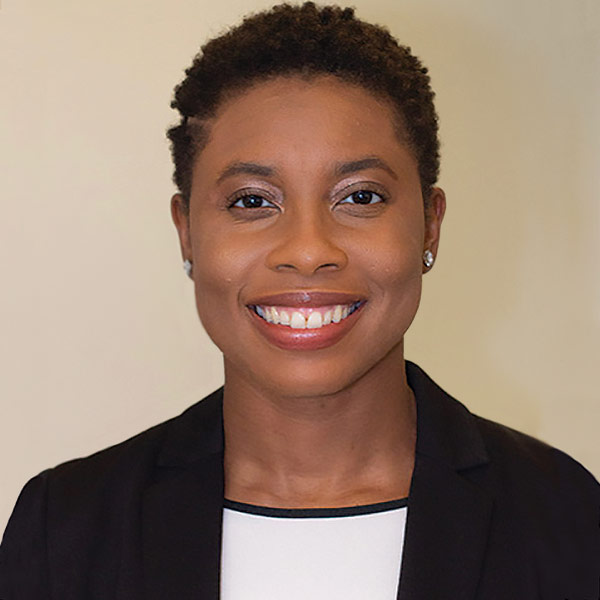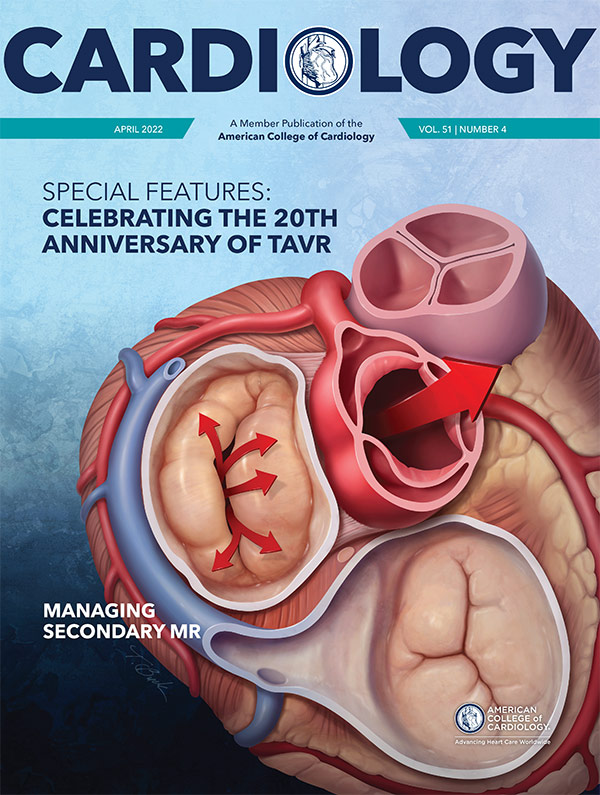For the FITs | What’s DEI Got to Do With It?

For the past few years, there has been an increase in attention and discussion within cardiovascular fellowship programs, as well as the broader health care community, about the importance of diversity, equity and inclusion (DEI) amongst health care providers. Numerous studies have demonstrated that increased provider diversity equates to improved cardiovascular care and access for all patients.1
This is especially true for underrepresented minority (URM) populations, such as Blacks/African Americans, Hispanics/Latinx, American Indians, Alaska Natives, Native Hawaiians and other Pacific Islanders, who are disproportionately affected by cardiovascular disease and lower quality of care.2 Thus, as physicians, if we are to uphold the words we spoke during our white coat ceremonies and aspire to "apply, for the benefit of the sick, all measures [that] are required … with special obligations to all fellow human beings," then increasing the diversity of providers is not just another box to check for fellowship recruitment – it is a fundamental responsibility.
Increased provider diversity equates to improved cardiovascular care delivery for patients. Patients of racial/ethnic minorities have a disproportionate burden of cardiovascular disease and worse outcomes. Yet, study after study has demonstrated worse quality of care for racial minorities and racial inequities in the use of guideline-based therapeutics for cardiovascular disease.2
However, provider diversity can be a powerful tool to combat the pervasive structural racism in cardiovascular care and outcomes in the U.S. URM physicians are not only more likely to provide care for underserved patient groups, they are more likely to follow evidence-based clinical guidelines for these patients.3 In addition, among Black patients, racial concordance between provider and patient also has been associated with increased uptake of recommended care, thus helping to reduce cardiovascular health disparities.1
Despite these data, diversity among cardiologists is straggling. In 2019, 21.5% of cardiology fellows were women and 12.4% were URMs.3 In a survey of 138 cardiology fellowship program directors (PDs), 69% agreed this statement is true: "Diversity is a driver of excellence in health care delivery." Furthermore, 86% felt diversity in cardiovascular disease as a field needs to increase. However, of the PDs committed to increasing diversity in their programs, only 35% had an actual plan to do so.
Although it is clear substantial and sustainable progress in DEI will require genuine commitment and meaningful involvement from leadership, it is also clear that leadership cannot do it alone. As fellows in training (FIT), we also have a professional and moral duty to engage and support DEI efforts as best as we can.
Personal Engagement By FITs
As FITs, we lead teams of junior trainees and potential cardiovascular fellows. We represent the culture of our programs to applicants, and we create an environment of belonging and support amongst ourselves to face the challenges of cardiology fellowship. Consequently, there are many opportunities for us to promote an equitable and inclusive environment. This responsibility belongs to all of us equally. Hence, it is imperative that non-URM fellows, as allies and advocates, are equally encouraged to participate in diversity initiatives along with their URM colleagues. This directly addresses the misconception that DEI is solely a URM responsibility and the invisible cost of leading often unprioritized DEI efforts by URM fellows, commonly referred to as the "minority tax."4 Additionally, this helps to emphasize the importance of diversity work for the cardiovascular community at large and enhances our own fellowship experience and future practice.2
As an aspiring ally and peer, consider the following actionable steps:
- Volunteer for DEI initiatives at your hospital and medical societies at the local/national levels.
- Remain aware with continuous evaluation and self-reflection to correct racial injustices and identify macro/microaggressions.
- Educate yourself and others about the importance of inclusiveness. Share with others their blind spots by showing empathy and respect.
- Listen, study and develop evidence-based solutions to create equitable and inclusive organizational cultures.
Engagement With Leadership
The survey finding that roughly 35% of cardiovascular PDs were unsure of how to increase diversity in their own programs, while agreeing it needs to increase, means there are several opportunities for FITs to help bridge the gap between their program's DEI aspirations and their actual implementation.
A good first step for fellows is a DEI needs assessment. A needs assessment evaluates a program's existing strengths/resources and identifies needs/gaps in order to determine priorities and make subsequent improvements. This can provide FITs the context necessary to engage with leadership about the program's current DEI status and provide tangible strategies for addressing needs. Below are a few strategies that any cardiology fellow can employ to initiate a conversation with their fellowship leadership.
Fellowship Recruitment
- Require readings on diversity literature/implicit bias training for the interview committee.
- Create a two-sentence mission statement about what the fellowship is looking for in candidates including diversity.
- Highlight the achievements of faculty and fellows or any DEI initiatives on the program website.
- Highlight outreach community programs focused on the URM patient population.
- Increase the number of URM faculty members in recruitment efforts.
- Hold race/ethnicity concordant breakout sessions with faculty and applicants during interview days.
Culture Change
- Hold didactics/grand rounds/journal clubs on structural racism/health disparities/social determinants of health.
- Develop formal coaching, mentorship and sponsorship pathways for URM.
- Intentionally incorporate URM fellows into research opportunities.
- Provide safe spaces to discuss macro/microaggressions (monthly fellows meeting, online anonymous reporting system, etc.).
- Hold required implicit bias training during orientation.
- Nominate URMs for committee memberships, writing opportunities, regional/national advocacy.
- Incorporate diversity metrics into yearly program evaluation.
- Increase awards and recognition to members of diverse groups.
- Be strategic about welcoming and hearing everyone at the table, and actively engage diverse members.
At my fellowship program, we have an ongoing process of assessments to improve DEI. During our recent assessment, the fellows identified several areas of improvements and provided several practical suggestions based on the lists here. Specifically, some of the suggestions we proposed include didactics on structural racism or health disparities, highlighting fellows' achievements on the website, emphasizing our program-specific leave policy, implicit bias training for interviewers and fellows, and utilizing resources from Temple University's Institutional Diversity, Equity, Advocacy, and Leadership Program. Although these steps will not fix all our DEI needs, they are incremental steps along our path of progress.
Physicians and health care providers have an ethical duty to care for all, with the purpose of maintaining the trust of patients and society every day. Therefore, increasing the diversity of providers is a fundamental responsibility shared by every single health care provider. As FITs, we must accept the critical role we play and develop an equitable culture for fellows and patients alike.

This article was authored by Oby B. Ibe, MD, MPH, a fellow in training at Temple University Hospital in Philadelphia, PA. Reach out to her @oby_ibe11.
References
- LaVeist TA, Pierre G. Integrating the 3Ds–social determinants, health disparities, and health-care workforce diversity. Public Health Rep 2014;129(suppl 2):9-14.
- The Kaiser Family Foundation and the American College of Cardiology Foundation. Racial/Ethnic Differences in Cardiac Care: The Weight of the Evidence. (Report #6040).
- Rabinowitz HK, Diamond JJ, Veloski JJ, Gayle JA. The impact of multiple predictors on generalist physicians' care of underserved populations. Am J Public Health 2000; 90:1225-8.
- Mehta LS, Fisher K, Rzeszut AK, et al. Current demographic status of cardiologists in the United States. JAMA Cardiol 2019;4:1029-33.
- Crowley AL, Damp J, Sulistio MS, et al. Perceptions on diversity in cardiology: a survey of cardiology fellowship training program directors. J Am Heart Assoc 2020:9:e017196.
Clinical Topics: Cardiovascular Care Team
Keywords: ACC Publications, Cardiology Magazine, African Americans, Fellowships and Scholarships, Mentors, Leadership, Program Evaluation, Alaskan Natives, Benchmarking, Cardiologists, Cardiovascular Diseases, Committee Membership, Empathy, Mentoring, Moral Obligations, Organizational Culture, Philadelphia, Respect, Social Determinants of Health, Teaching Rounds, Trust, Vulnerable Populations, Population Health, Societies, Medical, Cardiology, Volunteers, Attention, Hospitals, Faculty, Hearing, Writing, Awards and Prizes, Policy
< Back to Listings

